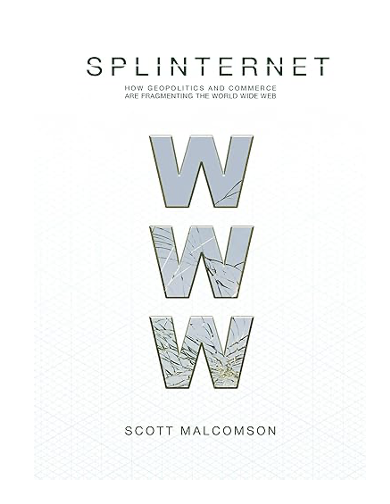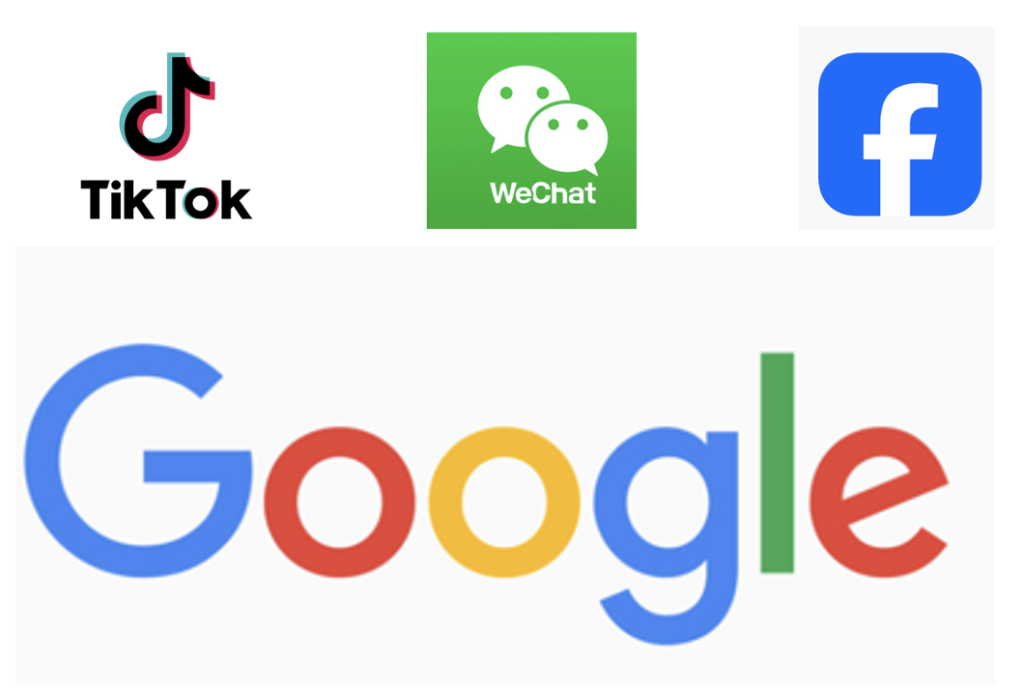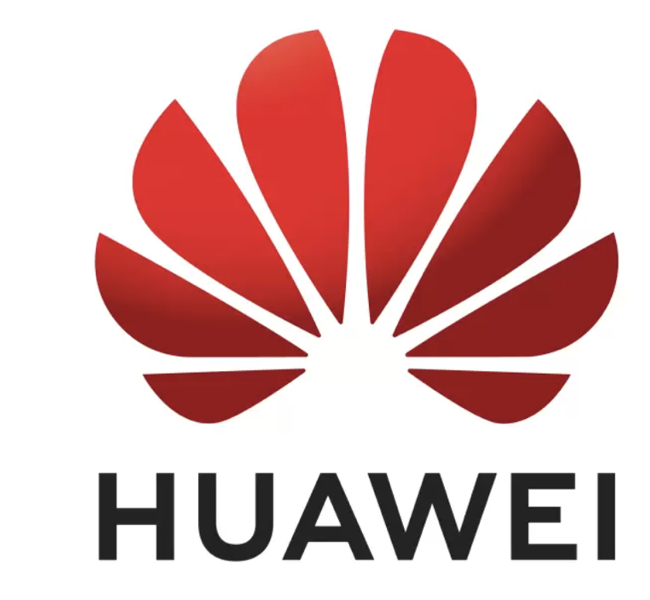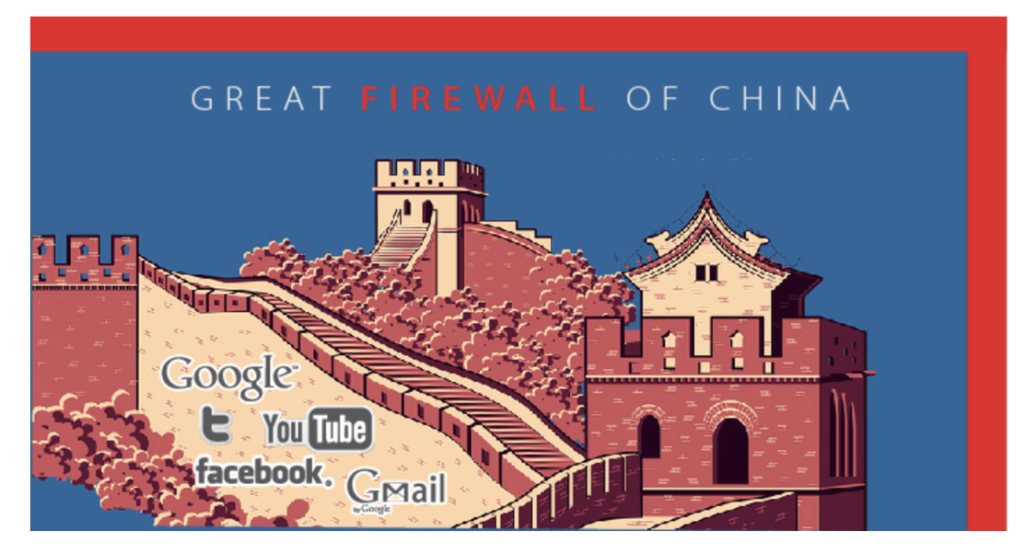1. Introduction
Initially, the digital realm was a borderless space. Yet, it’s currently undergoing a fragmentation, known as the “Splinternet”.
Picture this: you’re in a vast garden open to everyone. But as time passes, high walls start to emerge, segmenting different areas. This scenario illustrates how the once open internet is gradually affected by these walled gardens.
Emerging powers strive to carve out their digital territories, leading us to witness the transformation of an open internet ecosystem into ‘walled gardens’, each with its own set of rules. The issue of internet balkanization warrants our attention (Cattaruzza et al., 2016).
2. Concept of Splinternet
So, what exactly is the term “Splinternet”? The concept of Splinternet was first introduced by Malcomson in 2016. It encapsulates the divergence between globalization and the waning dominance of American power, signifying the rise of alternate power centres on the global stage.

Stallkamp (2021) examined how the internet has evolved. What used to be a relatively free network is morphing into one divided by national policies.
Real-life examples are plenty: the Trump administration’s ban on TikTok and WeChat, Russia’s prohibition on LinkedIn, China’s ban on Google and Facebook, or India’s restriction on TikTok.

3. The reasons for the Splinternet
Today, we see a metaphorical demarcation of boundaries in the virtual world of the Internet. I would like to call this phenomenon “balkanization of the internet”. Why does this happen and what forces are at work?
First, let’s look at the economic and political factors mentioned in Lemley’s (2021) analysis of “Splinternet.”
In a world where data is the new oil, countries face a choice: share resources or protect them. It has to do with national pride, security issues and power dynamics.
Every time a nation chooses to nationalize software or regulate it in a manner differing from global standards, a small fissure appears in the unified structure of the internet.
Beyond economic and political dimensions, deep-seated ideological divides play a role: democracy VS authoritarianism (Lemley, 2021). Some nations wield these platforms as tools of power, control, and international competitiveness. For example, the absence of companies such as Google and Facebook in China is related to economic competition, but also to the Chinese government’s control over information.
Geopolitical tensions further complicate the scenario. The internet, initially a tool for sharing and connection, is now weaponized by numerous countries (Lemley, 2021). Who holds the reins to the most influential digital platforms? Who can shape the global narrative? Why do some Western social media platforms fear emerging tech firms like Huawei?

4. The Impact of The Splinternet
Given what we’ve touched on earlier, what does a fragmented internet really signify for us as global citizens?
I think the most important impact is that the open and decentralized nature of the Internet has been challenged as a result. Instead of living in a cohesive digital space, we live in isolated cyber islands.
Defined by geopolitical boundaries, these islands obstruct the free flow of information and innovation. Take this for instance – users in the United States were able to view a blog post about political corruption in China, while users in China were barred from accessing it. This stifles global cooperation and limits exposure to different points of view.
For heaps of us, the Internet is like a window to the world, a melting pot of cultures, and a space to soak up varied voices. The rise of the Splinternet amplifies the echo chamber effect and prolongs biases, keeping us away from those who challenge our viewpoints.
Moreover, the Splinternet tweaks our understanding of online privacy and security. Countries like China, the USA, and Russia are carving their own digital domains, with varied regulations and standards popping up. While some regions champion individual privacy rights, others opt for a stricter eye on their populace, which, not gonna lie, is pretty tricky for users crossing these digital divides.
5. Real-world Cases: China and Russia
In the discussion of the ‘Splinternet’, there are two countries in the digital realm worth analyzing: China and Russia. Their positions and reactions on the Internet foreshadow the future of a fragmented digital world.
Recent happenings reveal that Russia, at an alarming pace, is drifting apart from Western online services (Ball, 2022).
Russia’s digital isolation is reflected in its actions: complete blocking of Facebook and almost complete blocking of Twitter. Companies such as Apple, Microsoft, TikTok and Netflix have opted out of the Russian market (Ball, 2022).
And the European Union? They’re pondering erasing Russian digital media off the net, making it a full-blown digital standoff (Ball, 2022).
But, these moves are just the tip of the iceberg. Other Russian manoeuvres, such as labelling Meta (the parent of Facebook, Instagram, and WhatsApp) as an extremist outfit and potentially bailing on international internet governing bodies, hint at a deeper crack in the making (Ball, 2022).
China’s strategy is a mix of tight regulation and home-grown innovation. They’re renowned for their ‘Great Firewall’. Most Chinese netizens are trapped within a state-sanctioned digital ecosystem (Ball, 2022). This censorship, originally intended to mask any negative news about China and its leaders, has become the Chinese government’s primary means of controlling the spread of public opinion.

What’s truly chilling? The internet, built to unite the world, is slowly morphing into a tool for division.
The internet we’ve grown to love, that symbol of global collaboration and knowledge-sharing, teeters on the brink of splintering into separate digital domains.
6. Global Reactions and the Future of Splinternet
In this rapidly evolving era of the internet, some argue that the Splinternet is a myth, given the substantial economic costs of complete disconnection. Mueller (2017) contests this, suggesting the real challenge is whether nation-states will dominate internet governance or if a new global pattern will emerge. Given the economic backbone of the internet, he questions the feasibility of the splinternet.
We now observe an array of unfolding internet governance models. O’hara and Hall (2018) describe them from four distinct perspectives:
- The Silicon Valley Open Internet – Similar to the idealism of the early Internet pioneers, this model relies on transparency and scalability, a vision of an Internet without limits.
- The European “Bourgeois” Internet – Europe champions a web characterised by etiquette and privacy, albeit at the cost of rapid innovation. In such a space, trolls and malpractices are curtailed.
- The Authoritarian Internet – Adopted by China and some other Asian nations, this leans towards surveillance and identification tools, aiming to ensure societal stability. Here, the internet becomes a medium for citizen control.
- The Commercial Internet – Backed by American Republicans, this model perceives the internet as a vast marketplace, viewing online resources as private commodities.
As these models jostle for prominence, it’s uncertain which internet will become the dominant pattern of tomorrow.
Furthermore, it’s imperative to note that the perspectives of O’hara and Hall (2018) and others don’t account for the impact of rapid advancements in AI on the internet’s trajectory. AI technology is a pivotal factor shaping the future web landscape.
Just as the Internet itself was once an unpredictable entity, its future trajectory remains uncertain. Our hope is to steer it in a direction where it remains a tool for communication and knowledge sharing.
7. Conclusion
As foreseen by industry leaders like Kai-Fu Lee and others, the swift ascent of American and Chinese internet giants signals potentially greater divergences in the digital realm (Kharpal, 2019).
We may soon see two dominant areas: one influenced by China, within its borders, but thriving in Southeast Asia and South America; The other, shaped by the United States, appeals to English-speaking countries and parts of Europe.
The “splinternet” phenomenon hints at a geopolitical undercurrent that is changing the shape of our digital space. Just as the Cold War drew tangible lines on the global map, a fractured Internet will draw invisible boundaries on cyberspace.
As users, we must be aware of these changes and actively participate in discussions related to our rights.
References
Cattaruzza, A., Danet, D., Taillat, S., & Laudrain, A. (2016). Sovereignty in cyberspace: Balkanization or democratization. 2016 International Conference on Cyber Conflict (CyCon US), 1–9. https://doi.org/10.1109/CYCONUS.2016.7836628
Kharpal, A. (2019, February 4). The “splinternet”: How China and the US could divide the internet for the rest of the world. CNBC. https://www.cnbc.com/2019/02/04/the-splinternet-an-internet-half-owned-by-china-and-the-us.html
Lemley, M. A. (2021, March). THE SPLINTERNET. Duke Law Journal, 70(6), 1397+. Gale Academic OneFile.
Malcomson, S. (2016). Splinternet: How geopolitics and commerce are fragmenting the World Wide Web. OR books.
O’hara, K., & Hall, W. (2018). Four internets: The geopolitics of digital governance. Centre for International Governance Innovation; The Centre for International Governance Innovation (CIGI)/Chatham House. https://www.cigionline.org/publications/four-internets-geopolitics-digital-governance/
Stallkamp, M. (2021). After TikTok: International business and the splinternet. AIB Insights, 21(2), 1–5.


Be the first to comment on "The Rise of Splinternet"